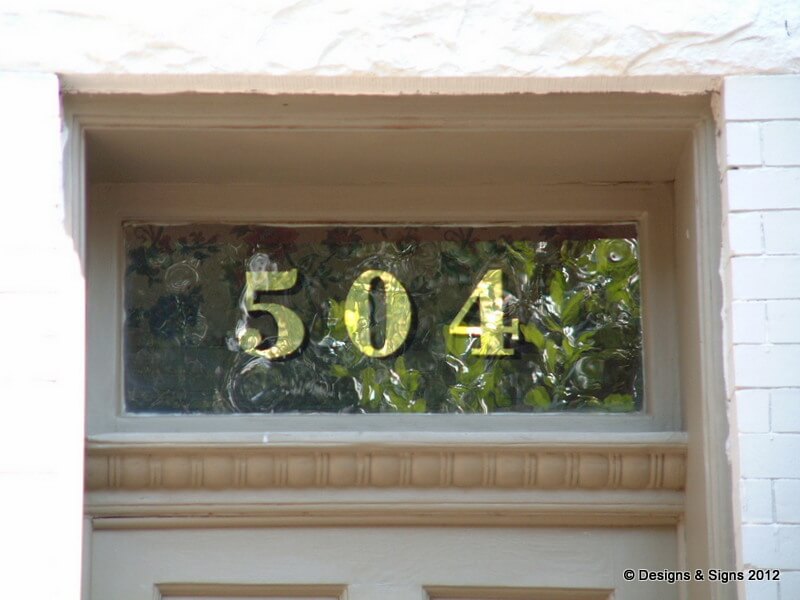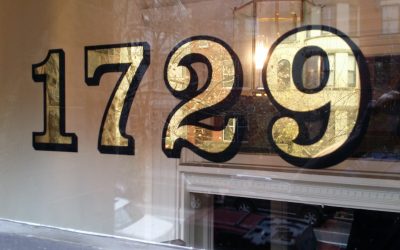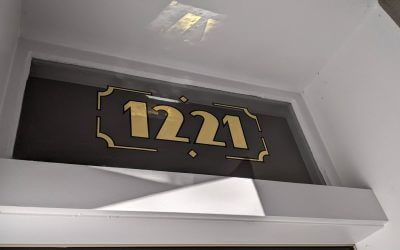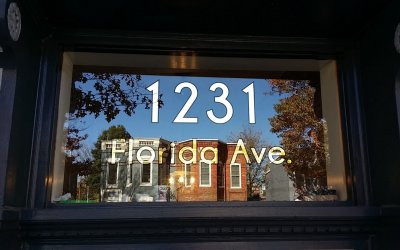Glass Gilding – gold leaf transom numbers on antique glass in Washington, DC. The genuine 23 karat gold leaf looks beautiful; it attracts your attention immediately. We apply it by hand every time, only using traditional, time-tested gilding techniques. Next, we can apply a shadow, contrasting the gold leaf and the glass. Finally, we use black backing paint behind the gold leaf because it protects the gold from scratches and dings. With proper care, these gold leaf numbers will last a lifetime.
Learn more about our Transom Window House Numbers. Detailed information and photos of the process from start to finish!
Find out more about transom window house numbers and how we work
Glass Gilding; Let’s Take a Closer Look
Sometimes we get to work on antique glass, not often as most homes have had their transoms replaced during renovation. This home has its original glass transom. Over time glass moves like a liquid. You can see the ripples in this glass. Maybe it is 50 years old or 100 years old. I’m not an expert in that area. When we see a piece of glass with ripples in it, we know it’s old.
Antique glass is usually thin, so we have to prep the glass carefully, applying minimal pressure as the pane could break easily. To be sure, we work with great care on the projects. For example, we always clean the glass gently, and we do not use razors on antique glass, as they can dig into the ripples causing marks that we cannot remove. Aside from the additional precautions described here, working on antique glass is much the same as gilding on new glass. So long as we take extra care in the process, your gold leaf transom numbers will always look good.




